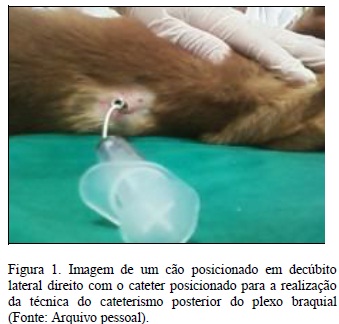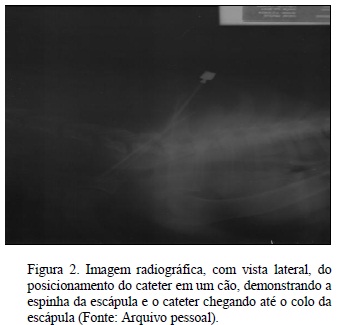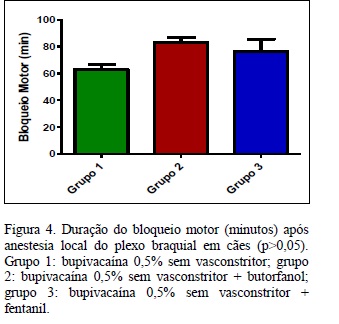We evaluated the efficiency of the posterior brachial plexus catheterization in dogs to promote motor and sensory block using three anesthetic protocols. We used nine dogs, males and females, without distinction of race and age, weighing 6 to 15kg which were divided into three groups of three animals per group. After confirming the correct positioning of the catheter through the posterior brachial plexus through radiographic examination, the medications were administered according to the groups. In group 1 the anesthetic bupivacaine 0.5% without a vasoconstrictor dose of 2mg.kg-1 was used alone. In group 2 the anesthetic bupivacaine was associated with butorphanol at a dose of 0.25mg.kg-1. In group 3, the fentanyl dose was associated with 0.005mg.kg-1 anesthetic bupivacaine. There was no statistically significant difference between groups. It was observed that the duration of sensory and motor block was clinically higher in group 2. The posterior brachial plexus catheterization allows the application of drugs closer to the nerve plexus promoting additional analgesia in the forelimbs.
dog; posterior blockade of brachial plexus; bupivacaine; butorphanol; fentanyl





